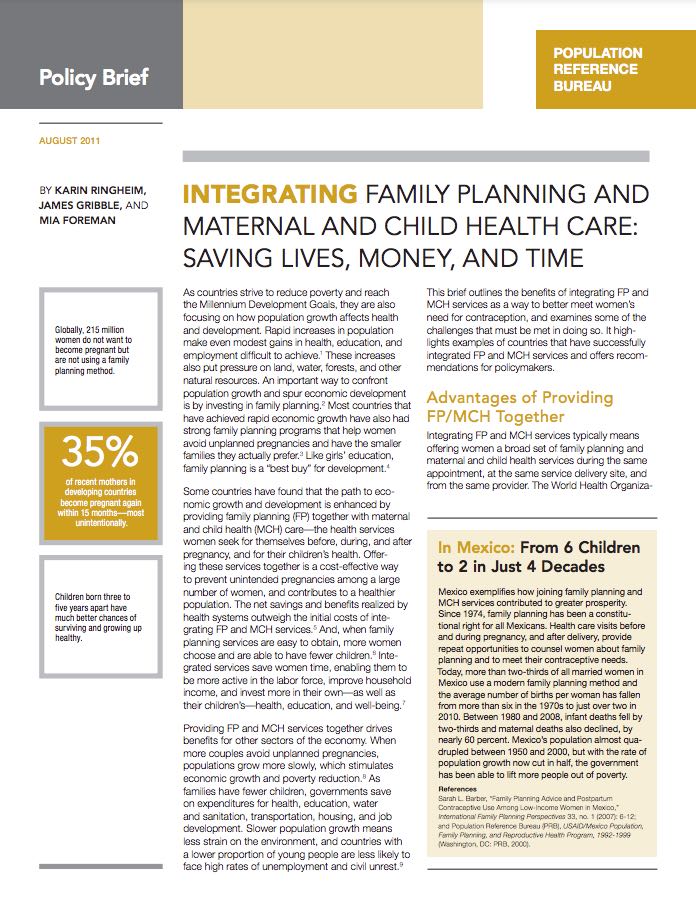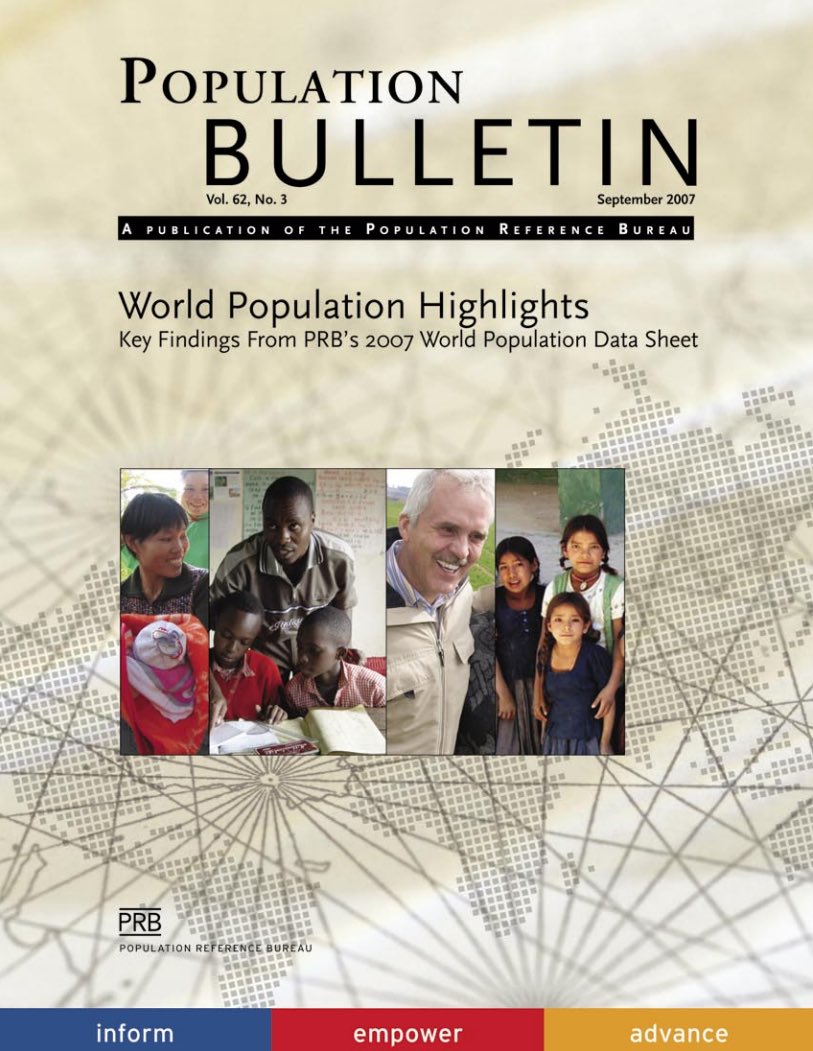Understanding and Using Population Projections
Government policymakers and planners around the world use population projections to gauge future demand for food, water, energy, and services, and to forecast future demographic characteristics.

Government policymakers and planners around the world use population projections to gauge future demand for food, water, energy, and services, and to forecast future demographic characteristics.

Project: IDEA: Informing Decisionmakers to Act
(2011) As countries strive to reduce poverty and reach the Millennium Development Goals, they are also focusing on how population growth affects health and development.
(2006) The world's elderly population is quickly growing, both in its absolute numbers and in its percentage relative to the younger population—the latter trend known as population aging.
(2010) What are the "next generation" contraceptives? Several innovative contraceptive methods are expected to enter the market within five years, and more are under development. What are they and who is likely to use them? How might new methods help reduce the unmet need for contraception of an estimated 200 million women worldwide?

(2014) Ukraine, a former republic of the Soviet Union, has undergone a series of dramatic demographic changes since its independence in 1991. Most significant, its birth rate declined sharply following independence, mirroring similar developments in other former Soviet republics.

(2013) Africa, by far the world’s poorest region, will record the largest amount of population growth of any world region between now and 2050.